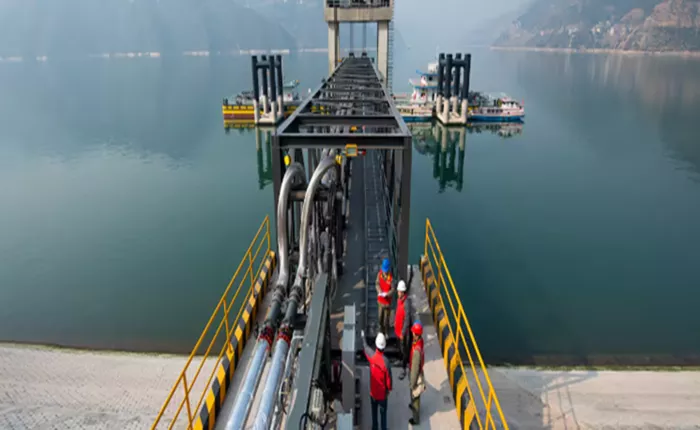According to a recent report from the International Energy Agency (IEA), demand for natural gas is expected to increase more than previously anticipated. The agency forecasts that this strong demand will continue into next year, raising concerns about supply shortages due to insufficient production growth.
A year ago, the IEA predicted that global oil and gas demand would peak before 2030, suggesting no further investments were needed in hydrocarbon production. However, the current landscape indicates that there is a significant lack of investment in new natural gas production, leading to an impending shortage.
In previous years, the liquefied natural gas (LNG) market experienced a substantial surplus, prompting a rush to build LNG facilities as supply outpaced demand. Recently, however, many countries have increasingly turned to liquefied natural gas as a cleaner and cost-effective alternative to coal. This shift was particularly notable in 2022, when high prices forced many Asian LNG buyers out of the market as European nations, facing disruptions in Russian pipeline supplies, surged to secure their energy needs.
Europe has solidified its status as a major LNG importer, now bracing for the end of the last remaining Russian pipeline gas flow following Ukraine’s decision not to renew its transit agreement with Gazprom. This situation necessitates increased LNG imports; however, new supply is not materializing quickly enough. As a result, Europe faces the risk of another price shock, which could further marginalize poorer nations attempting to reduce their coal dependency.
The slow pace of new LNG supply is surprising, given the optimistic projections for gas demand from multiple forecasting agencies, including the IEA. This demand growth is driven by the transition away from coal, rising populations, and the increasing energy needs associated with advancements in artificial intelligence.
Several factors contribute to the sluggish expansion of natural gas supply. The physical limitations of LNG production facilities pose a significant challenge. Constructing these plants requires considerable time, and they are currently experiencing rising costs and an increasingly complex regulatory environment, particularly in the United States, the world’s largest producer and exporter of natural gas. Adding to these challenges, a recent court decision revoked a permit for an LNG project due to climate change concerns.
Moreover, the Biden administration’s recent pause on new LNG capacity could hinder supply expansion in the medium term, despite immediate demand pressures. This pause, based on a single study arguing that natural gas has a worse environmental impact than coal, has sparked criticism for its methodological flaws but has nonetheless tightened future gas supply markets.
The European Union, despite its strong LNG demand, has also complicated its situation. The introduction of the Methane Regulation aims to ensure that only low-emission LNG is permitted within the EU. However, this legislation is likely to escalate costs for suppliers in building production facilities, ultimately increasing the price of natural gas. Conversely, it could potentially make non-certified LNG available to less wealthy buyers, alleviating some demand pressures on suppliers.
“The growth we’re witnessing in global gas demand this year and next reflects the gradual recovery from a global energy crisis that significantly impacted markets,” stated Keisuke Sadamori, the IEA’s energy markets director, in a recent release regarding demand and supply trends. He cautioned, however, that the balance between demand and supply is precarious, with substantial risks of future volatility.
Interestingly, this observation contrasts with the IEA’s earlier assertion that demand for hydrocarbons would diminish due to the rise of alternative energy sources like wind and solar. Previously, the agency had forecasted peak demand for oil in four years and for gas two years later. Current trends indicate that gas demand remains closely tied to economic growth, which poses challenges for Europe as it struggles to achieve any significant economic recovery. Access to affordable gas is crucial for overcoming these challenges. Meanwhile, various international organizations focused on climate change advocate for Asian nations to increase their use of gas rather than coal, necessitating lower gas prices that seem unlikely to materialize in the near future. This presents yet another obstacle in the transition to cleaner energy sources.
Related topic:
LNG Vs Natural Gas: What Is The Difference?

